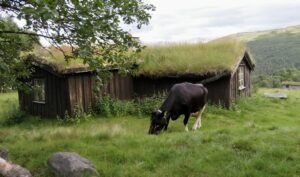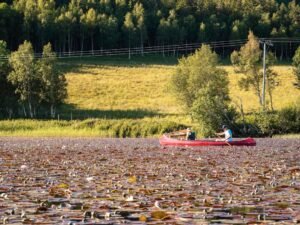

Norwegian Road Signs: Driving and Language Tips
Driving in Norway is an exhilarating experience that offers breathtaking views, scenic routes, and well-maintained roads. To make the most of your journey and ensure safety, it is crucial to understand Norwegian road signs and familiarize yourself with essential driving vocabulary. This detailed guide covers the types of road signs you’ll encounter, provides driving tips, and includes a comprehensive vocabulary list to help you navigate the Norwegian roads effectively.
Table of Contents
ToggleUnderstanding Norwegian Road Signs
Norwegian road signs adhere to the Vienna Convention on Road Signs and Signals, which means they are similar to those in many other European countries. However, there are unique aspects and specific Norwegian terms that you should be aware of.
Trafikkregulerende skilt (Regulatory Signs)
These signs enforce road laws and regulations. They are often circular with a red border, indicating a command that must be followed by all road users.
- Stopp (Stop): This sign is a red octagon with the word “Stopp” in white letters. It mandates a complete halt at intersections, ensuring that you give way to traffic on the intersecting road. Failure to stop can result in heavy fines and is considered a serious traffic violation.
- Vikeplikt (Yield): An inverted white triangle with a red border. It instructs drivers to give way to other traffic, ensuring safe merging and intersection crossing. Understanding when and where to yield is essential for avoiding accidents.
- Fartsgrense (Speed Limit): A circular sign with a number indicating the maximum speed allowed in kilometers per hour (km/h). Common speed limits are 30, 50, 70, and 100 km/h, reflecting different road types and conditions. Speeding can lead to significant fines and points on your driving license.
Varselskilt (Warning Signs)
These signs are triangular with a red border, alerting drivers to potential hazards on the road ahead. Paying attention to these signs can prevent accidents and ensure a safer driving experience.
- Gangfelt (Pedestrian Crossing): A triangular sign depicting a person walking. It warns of a pedestrian crossing ahead, prompting drivers to reduce speed and be prepared to stop. Norway prioritizes pedestrian safety, and failing to yield at crossings can result in hefty fines.
- Skarp sving (Sharp Curve): A triangular sign with a symbol indicating a sharp turn, either left or right. It warns drivers to reduce speed and proceed with caution. These signs are crucial in mountainous and coastal regions where roads can be winding.
- Rasfare (Falling Rocks): A triangular sign showing rocks falling. It indicates areas where falling rocks might be a danger, advising drivers to stay alert and possibly avoid stopping in the marked zone. Such areas are common in Norway’s rugged terrain.
Opplysningsskilt (Informational Signs)
These signs provide helpful information to drivers and are often rectangular with blue or green backgrounds. They ensure that drivers have the necessary information to reach their destinations and use road services effectively.
- Parkering (Parking): A blue square sign with a white ‘P’, indicating parking spaces or parking lots. It helps drivers locate authorized parking areas. Be aware that parking rules can be strict, and illegal parking may result in fines or towing.
- Sykehus (Hospital): A blue square sign with a white ‘H’, indicating the presence of a hospital nearby. This is crucial in emergencies for quick access to medical facilities. Knowing the location of the nearest hospital can be lifesaving.
- Bensinstasjon (Gas Station): A sign showing a fuel pump, indicating the location of a gas station. This is essential for planning refueling stops during long journeys. In remote areas, gas stations may be sparse, so plan accordingly.
Veivisningsskilt (Directional Signs)
These signs help drivers navigate and find their way to various destinations. They provide clear guidance on routes, exits, and important locations.
- Motorvei (Highway): A blue rectangular sign with a white motorway symbol, indicating the start of a highway where higher speeds are permitted and certain regulations apply. Highways in Norway are well-maintained and provide efficient routes between major cities.
- Avkjørsel (Exit): A green rectangular sign indicating exits from highways. It helps drivers prepare to leave the highway safely. Exits are well-marked, but it is important to plan your route to avoid missing your turn.
- Sentrum (City Center): A white rectangular sign pointing towards the city center. It is useful for tourists and those unfamiliar with the area to find their way to central locations. City centers often have restricted areas for vehicles, so be aware of local regulations.
Suppleringsskilt (Supplementary Signs)
These signs provide additional information that supplements other signs. They are typically rectangular and placed below primary signs to offer extra context or instructions.
- Gjelder ikke syklister (Does Not Apply to Cyclists): A supplementary sign indicating that the regulation does not apply to cyclists. This is often seen below no-entry or one-way signs.
- Gjelder fra kl. (Applies From): Indicates the specific time period during which the regulation applies. For example, parking restrictions might only be enforced during certain hours.
- Buss og taxi (Bus and Taxi): Indicates that the regulation applies to buses and taxis only, often used for dedicated lanes.
Driving Tips in Norway
Driving in Norway comes with its own set of rules and considerations. Here are some tips to ensure a smooth and safe journey:
- Fartsgrense (Speed Limits): Always adhere to the posted speed limits. Speed cameras are common, and fines for speeding can be hefty. Be especially mindful in urban areas and near schools where limits are lower.
- Lys på (Lights On): It is mandatory to drive with dipped headlights at all times, even during the day. This enhances visibility and safety in varying light conditions, especially during the long twilight hours of the northern latitude.
- Vinterkjøring (Winter Driving): In winter, roads can be icy and treacherous. Make sure your vehicle is equipped with winter tires, and consider carrying snow chains. Be prepared for sudden changes in weather and road conditions, and allow extra time for travel.
- Dyreliv (Wildlife): Be cautious of wildlife, especially in rural areas. Signs indicating “Elgfare (Elk Crossing)” are common, and collisions with large animals can be very dangerous. Reduce speed and stay alert in areas marked by these signs.
- Rundkjøring (Roundabouts): Traffic in roundabouts flows counterclockwise, and you must yield to traffic already in the roundabout. Understanding the correct lane usage and signaling is crucial for safe navigation through these intersections.
- Ferge (Ferry): Norway has many fjords and lakes that are crossed by ferries. Pay attention to ferry schedules and signs indicating ferry crossings to ensure smooth travel across water bodies. Ferries are an integral part of the Norwegian road network, and delays can impact your travel plans.
- Bomstasjon (Toll Station): Many roads, especially highways, have toll stations. Familiarize yourself with the payment methods, which often include automatic tolling systems (AutoPASS). Make sure your vehicle is registered correctly for these systems to avoid fines.
- Tunnel (Tunnel): Norway is home to numerous tunnels, some of which are among the longest in the world. Ensure your vehicle’s lights are on when entering tunnels, and be prepared for sudden changes in light and conditions.
- Bro (Bridge): Bridges in Norway are engineering marvels, connecting fjords and valleys. Be cautious of wind conditions and ice on bridges, especially during winter.
- Fotgjengerfelt (Pedestrian Zone): Many city centers have pedestrian zones where vehicle access is restricted. Be mindful of these areas to avoid fines and ensure the safety of pedestrians.
Useful Norwegian Vocabulary for Driving
To help you navigate the roads and understand road signs, here is a comprehensive list of useful Norwegian terms related to driving:
- Trafikkregulerende skilt (Regulatory signs)
- Varselskilt (Warning signs)
- Opplysningsskilt (Informational signs)
- Veivisningsskilt (Directional signs)
- Suppleringsskilt (Supplementary signs)
- Stopp (Stop)
- Vikeplikt (Yield)
- Fartsgrense (Speed limit)
- Gangfelt (Pedestrian crossing)
- Skarp sving (Sharp curve)
- Rasfare (Falling rocks)
- Parkering (Parking)
- Sykehus (Hospital)
- Bensinstasjon (Gas station)
- Motorvei (Highway)
- Avkjørsel (Exit)
- Sentrum (City center)
- Elgfare (Elk crossing)
- Rundkjøring (Roundabout)
- Lys på (Lights on)
- Vinterkjøring (Winter driving)
- Dyreliv (Wildlife)
- Ferge (Ferry)
- Bomstasjon (Toll station)
- Tunnel (Tunnel)
- Bro (Bridge)
- Fotgjengerfelt (Pedestrian zone)
- Sykkelfelt (Bicycle lane)
- Ulykke (Accident)
- Politi (Police)
- Veiarbeid (Roadwork)
- Kø (Traffic jam)
- Omkjøring (Detour)
- Enveis (One-way)
Conclusion
Understanding Norwegian road signs and familiarizing yourself with relevant vocabulary can greatly enhance your driving experience in Norway. By following the road rules and being aware of the signs, you can ensure a safe and enjoyable journey through one of the most beautiful countries in the world. Whether you’re navigating city streets or exploring remote rural areas, these tips and vocabulary will help you on your way. Safe travels!
Driving in Norway offers a unique blend of scenic beauty and well-maintained infrastructure. However, the key to a successful journey lies in understanding and respecting the local road signs and regulations. Equipped with this guide and vocabulary, you are now better prepared to explore Norway’s stunning landscapes safely and confidently. Enjoy your travels, and drive safely!
If you want to learn Norwegian, you can register for classes here. We look forward to hearing from you and helping you become fluent in Norwegian.





